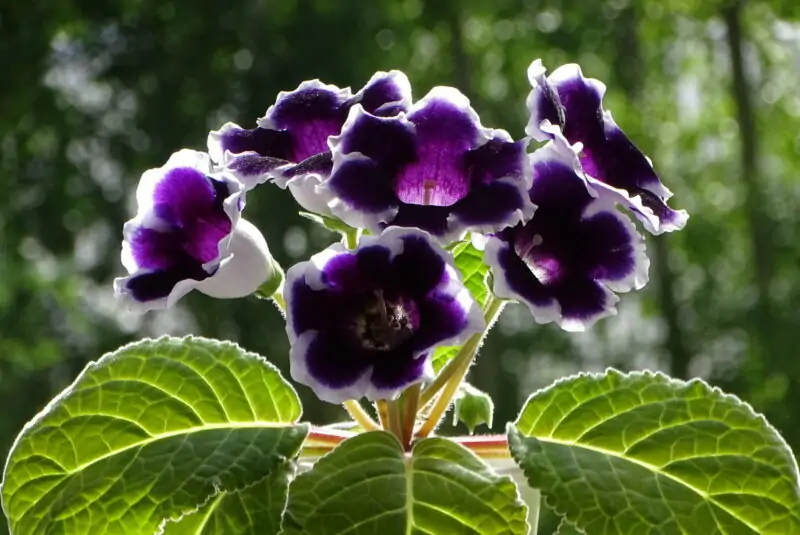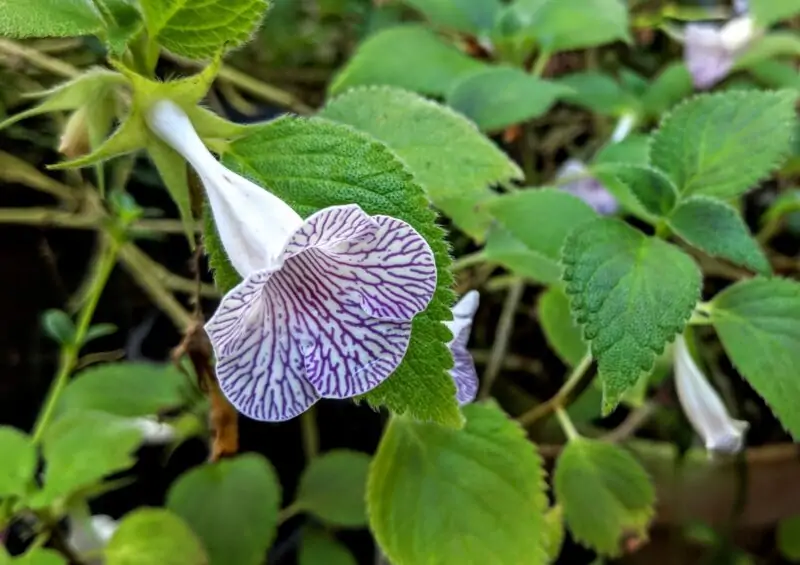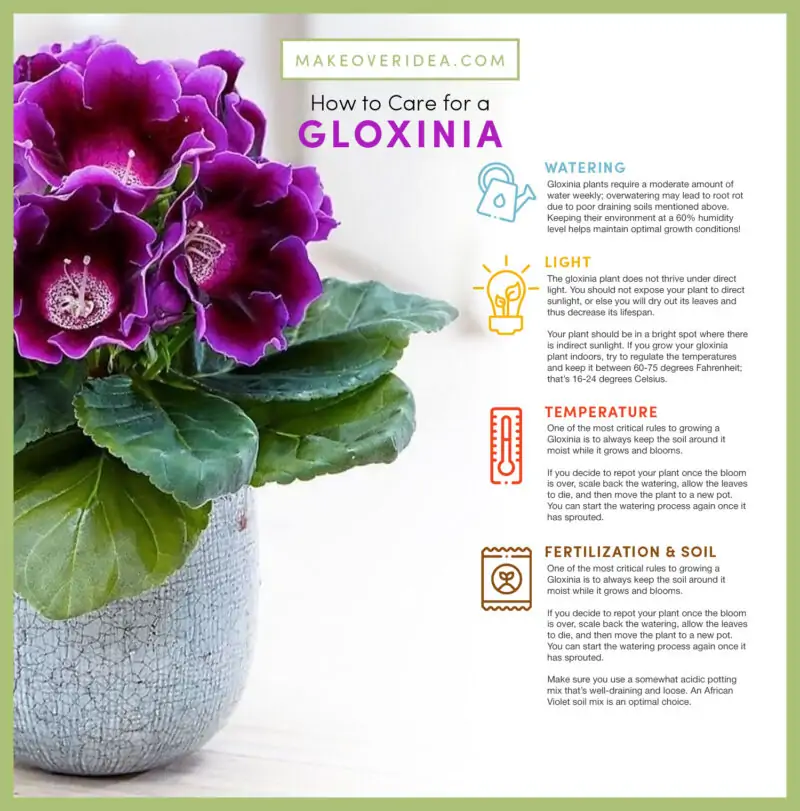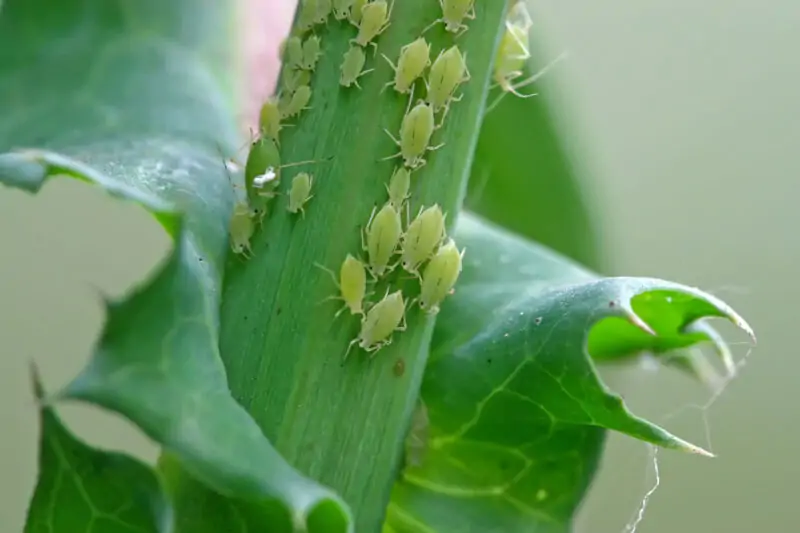Ask a Florist: How to Grow and Care for Gloxinia and Hybrids

Are you looking for a stunning flowering plant to add some color and life to your home? Look no further than the gloxinia! These velvety, vibrant flowers are sure to be a showstopper in any room. However, caring for these flowering houseplants and numerous gloxinia hybrids can be tricky if you don’t know what you’re doing.
In this article, we’ll cover everything from ideal growing conditions and fertilizing techniques to propagation methods and potting and repotting gloxinia tips. We’ll also discuss how to encourage reblooming, how to water the plant, and how to address common pest problems. Plus, we’ll answer some frequently asked questions about growing your gloxinias so that by the end of this article, you will have all the knowledge necessary to care for your own gorgeous gloxinia plants.
Understanding Gloxinia Plants
Before diving into how to best care for your new houseplant addition, let’s take a moment to get familiar with it!
Characteristics of Gloxinia Flowers
Gloxinias are popular house plants that are known for their large bell-shaped blooms with vivid colors such as pink or purple hues, often containing white throats at their center. The foliage is equally impressive; glossy green leaves covered in soft hairs give them an almost velvet-like texture, which only adds another level of interest when displayed indoors.
Sinningia Speciosa or Gloxinia: What’s The Difference?

When shopping around garden centers or nurseries, one may come across Sinningia speciosa rather than “gloxinia.” Rest assured that they both refer to the same species! In fact, many people call them interchangeably due to their similarities.
Growing Your Gloxinia Plant

Now it’s time to dive into what makes taking care of these unique tropical plants somewhat challenging but rewarding once established properly!
Ideal Growing Conditions For Your Gloxinia
These beautiful flowers thrive best under specific temperature ranges between 60 and 75 degrees Fahrenheit during day hours, while lower temperatures ranging from 55-65 degrees Fahrenheit are recommended during the night hours. This is perfect for keeping your gloxinia plant indoors, but if you want to grow it outside, then be sure that your area has those same ranges.
Light Requirements and Recommendations
These plants need indirect light in order to thrive. Gloxinias also can’t handle direct sunlight, or they will wilt rapidly, so it’s best to keep them away from any windows facing south, east, or west and moving the plant under shaded areas outdoors where possible. Grow lights are also a viable option.
Soil, Water & Temperature Preferences
The soil used should have good drainage abilities, which means mixing potting mix with perlite would make a great blend for your gloxinias to grow; African Violet potting soil is also a good choice of potting medium.
Gloxinia plants require a moderate amount of water weekly; overwatering may lead to root rot due to the poor draining soils mentioned above. Keeping their environment at a 60% humidity level helps maintain optimal growth conditions! To let your gloxinias have the humidity they need, place the plants on a tray of wet pebbles or use a quality humidifier.
While some gloxinia specialists recommended avoiding spilling water on its leaves and flowers in order not to ruin the delicate blooms and foliage, the flower can be negatively affected only if you use very cold (10 degrees Fahrenheit and colder) water.
Fertilizing Your Gloxinia Plant For Optimal Growth
Applying fertilizer every two weeks during the active growing season (spring through summer) using balanced houseplant fertilizers with an NPK ratio of 20:20:20 will provide the necessary nutrients needed for healthy blooms and foliage development.
Pruning Techniques And Tips For Gloxinia Plants
To promote fuller plant growth, pruning dead flowers back after the blooming period ends encourages new bud formation while pinching off tips regularly also encourages bushier-looking gloxinias.
Getting Gloxinias To Rebloom
If you’ve been lucky enough to experience one round of flowering, what’s next? Here’s how to get more out of these unique tropical beauties:
Encouraging A Second Flowering Cycle
In order to encourage a second cycle when the first bloom period is finished, cut all stems down until only leaves remain on top, then place them in a cool, dry location (50-55 degree range) for several months. Once time passes, begin watering again around week six by providing just enough moisture to stimulate the regrowth process without causing damage, such as excess water. Flowering can happen at any time after this treatment; gradually cut back on watering once the growing and blooming season started again.
Dormancy And Gloxinia Plant Care
Gloxinias naturally go through a dormant period after the blooming cycle ends. During dormancy, plants will experience die back, and leaves may wilt or turn yellow. This is normal and doesn’t mean that your plant is dead, so don’t worry! Just be sure to reduce watering and stop adding fertilizers to the soil.
Water your dormant plant once every two weeks to keep the soil moist but not overwatered until new growth and new leaves start appearing again.
Propagating Gloxinia Plants
Want more gloxinia? Here’s how to make your gloxinias grow from seeds or stem cuttings:
Gloxinia Propagation Methods
Propagation can be done via leaf cutting or stem propagation methods.
Growing Gloxinias From Seeds or Cuttings
Gloxinia seeds are tubers (also often called bulbs). Here is how to grow new plants from them:
- Remove the tubers you’ve bought in a flower shop from plastic bags and soak them for 2-3 hours;
- Prepare the pots for your collection of plants: the minimal size of a pot for a single gloxinia seedling is 5 inches (12 cm) in diameter;
- Half-fill your pots with quality composing, place your tuber inside, and fill the remaining space with more compost;
- Water your pots: avoid overwatering to prevent tuber rot;
- Gloxinias need light to germinate, place the pots near the window where there is plenty of daylight (but not direct sunlight);
- Water your pots lightly when the compost got dry: seedlings will sprout from the tuber soon. Do not make the mistake of overwatering the soil when the seeds germinate.
Starting seeds indoors during late winter/early spring months in a warm, well-lit environment helps promote germination rates while taking cuttings during active growing periods works best for rooting success rates.
Potting & Repotting Your Gloxinias
Proper pot choice and repotting techniques are crucial for maintaining healthy houseplants!
Choosing The Right Pot And Potting Mix For Gloxinia
A pot with proper drainage holes should always be used when planting your gloxinia plant; this ensures excess water drains away properly, preventing root rot issues down the road. Also, make sure to use a quality soil mixture containing peat moss, perlite, and vermiculite mixtures, which provide the necessary nutrients needed for optimal growth conditions.
Repotting Tips For Gloxinia Plants
When it comes time to repot, keep in mind that these tropical plants prefer tight quarters, which means only one size up in container diameter per year is recommended, as too much room could lead to overwatering problems at the roots level, causing damage from poorly draining soils mentioned earlier.
Common Pests And Diseases

While it is easy to care for gloxinias as they are hardy plants, they are still susceptible to pests and diseases like any other living organism out there!
Identifying & Treating Common Pest Problems With Your Gloxinia Plant
Common pests include spider mites, aphids, and mealybugs. You can usually recognize the infected plants by brown spots on the leaves. These can be treated with insecticidal soap sprays or neem oil for organic treatments.
Preventing And Managing Gloxinia Diseases
The main diseases that affect gloxinia plants are root rot and powdery mildew, both caused by overwatering and poor draining soils mentioned earlier. Preventive measures, such as using proper soil mixtures and quality containers, help prevent these issues from happening.
Gloxinia Toxicity Concerns
Are you worried about your furry friends? Here’s what to know:
Are Gloxinia Plants Toxic To Cats & Dogs?
Yes! The leaves and flowers of the plant contain toxic chemicals, which may cause vomiting and diarrhea in pets if ingested. Keep away from curious paws!
FAQs (Q&A format):
They prefer indoor environments, but outdoor growth is possible under specific temperature ranges between 60-75 degrees Fahrenheit during day hours, while lower temperatures ranging from 55-65 degrees Fahrenheit are recommended during night hours. If the temperatures outside are too low for your gloxinias, keep them indoors.
Weekly watering sessions should suffice without causing any damage due to overwatering, leading to potential root rot problems later down the road.
Yes, they’re part of the Gesneriaceae family, along with other popular houseplants like African violets!
Propagating via leaf cutting or stem propagation methods works well.
It’s considered a perennial tropical flower species that goes dormant after the flowering cycle ends.
Cutting back dead stems and promoting new bud formation through consistent pruning techniques will encourage a second blooming period.
Yes! The leaves and flowers of the plant contain toxic chemicals, which may cause vomiting and diarrhea in pets if ingested. Keep away from curious paws!
Conclusion
Gloxinias are stunning tropical plants that can add vibrant colors and textures to any room. But taking care of these beauties requires some knowledge and effort on your part, especially when it comes to ideal growing conditions, fertilizing techniques, propagating methods, and potting tips.
Remembering key points such as using proper soil mixtures, quality containers for repotting, and pruning dead stems regularly helps promote optimal growth potential while preventing common problems like root rot and poor drainage issues.
By following the advice provided here, you’ll be able to enjoy thriving gloxinia houseplants with beautiful blooms and foliage all year long without ever having to worry about toxicity concerns or pests and diseases harming them along the way!